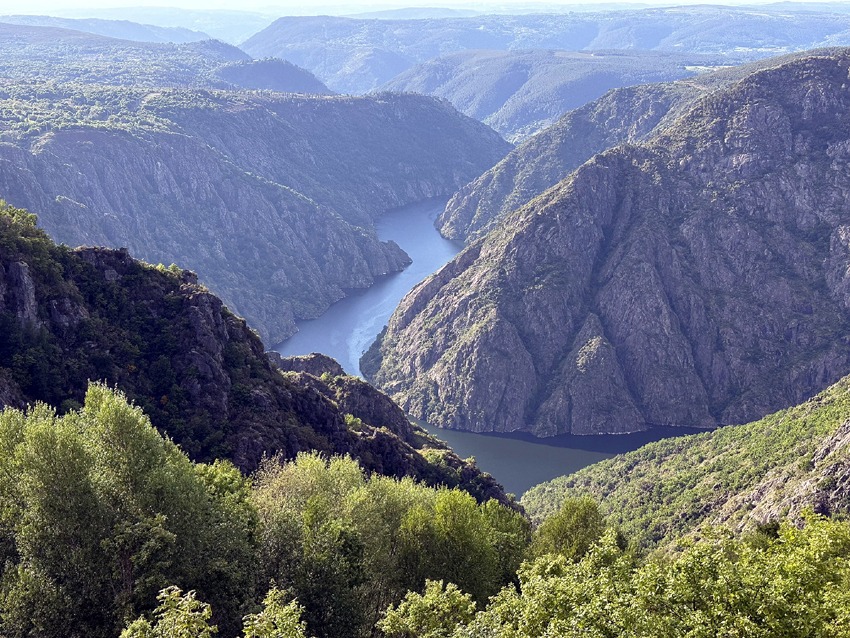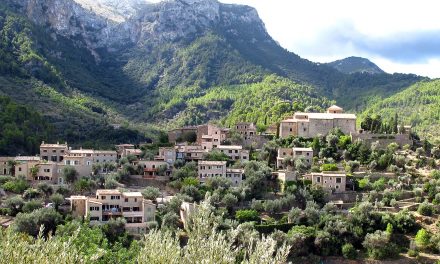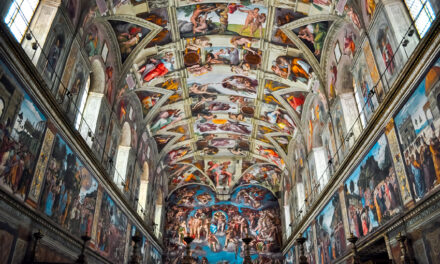Spain
Galicia: Where Time, Sea, and Spirit Collide
Article and photography by Michael Morcos
There’s something about Galicia that immediately sets it apart from the rest of Spain. Maybe it’s the mist that drifts between its green hills, the way the Atlantic crashes against its rugged coastline, or how every village and stone church feels like it’s holding a secret. On a recent trip to this mystical northwestern corner of the Iberian Peninsula, I journeyed through some of Galicia’s most iconic and storied locations—from ancient border towns to dramatic river canyons, from medieval monasteries to the windswept islands of a national park. What I discovered was a region rooted in history and nature, and full of the kind of quiet grandeur that leaves an everlasting mark.
Stepping into the Past in Tui
My Galician adventure began in the town of Tui, right on the border with Portugal. Tui was once the provincial capital of the ancient Kingdom of Galicia, and its history still lingers in the narrow stone streets and weathered façades. As I wandered through the old quarters, I was struck by how the past lived so vividly in the present. The highlight of the walking tour was the Cathedral of Santa María, perched atop a hill like a watchful guardian. Its mixture of Romanesque and Gothic styles reminded me of the town’s long-standing importance and its once-central role in the Christian reconquest of Iberia.
Into the Heart of Ribeira Sacra
From Tui, I journeyed inland to what might be Galicia’s most majestic and spiritual region: Ribeira Sacra. With its dramatic canyons carved by the Miño and Sil Rivers, and its dense concentration of Romanesque monasteries—seven of the original eighteen still standing—Ribeira Sacra is a living archive of religious devotion and architectural beauty. As I explored its terraced landscapes, I was awestruck by the “socalcos,” steep vineyard terraces carved by monks centuries ago, clinging bravely to the canyon walls. This was heroic viticulture at its most literal and poetic.
One of the most powerful moments of the trip was visiting the Monastery of San Pedro de Rocas, considered Galicia’s oldest, dating back to the 6th century. Carved directly into the rock face, the monastery felt more like a sacred cave than a human structure. It was humbling to walk where monks had lived, prayed, and worked more than 1,400 years ago.
A Canyon Cruise and Wine with a View
From San Pedro, I boarded a small boat for a one-hour cruise through the deepest, most awe-inspiring section of the Sil River Canyon. Towering cliffs rose on either side of us—some nearly 500 meters high—and the silence was interrupted only by birdsong and the occasional splash from the river. The raw natural beauty here was staggering.
Our next stop was the Regina Viarum Winery, perched on one of those impossible hillsides. Touring the vineyards and cellars, I learned how the extreme conditions and ancient terraces give the wines their distinct character. The tasting that followed was as spectacular as the view—elegant reds and fresh whites that reflected the soul of Ribeira Sacra.
From there, we drove to Pena do Castelo, a viewpoint that offered one of the most breathtaking scenes I’ve ever witnessed: vineyard-covered slopes plunging into the river below, framed by jagged peaks and soft clouds. It’s a place that doesn’t just ask for your attention—it demands your awe.
Celtic Hills and Atlantic Breezes
Heading back toward the coast, we stopped at a windswept hill offering panoramic views of the Rías Baixas, a network of estuaries that define Galicia’s lower coastline. Here, we visited a castro—an ancient Celtic settlement that predates Roman conquest. Standing on those ancient stones, looking out over the sea, I could feel the pulse of Galicia’s pre-Roman past still alive in the wind.
From there, we drove along the region’s most rugged and scenic coastline en route to Baiona. The road twisted and turned alongside dramatic cliffs and crashing waves until we arrived at this postcard-perfect fishing village. Our walking tour took us through narrow alleys and along the waterfront to the replica of La Pinta, the ship that first brought word of Columbus’ voyage to Europe in 1493. The connection between Galicia and global history felt surprisingly intimate in that moment.
Island Escape in a National Park
That afternoon brought us to the Atlantic Islands of Galicia Maritime-Terrestrial National Park, a protected archipelago that feels like a world unto itself. After arriving on the North Island, we hiked to the Pedra da Campá viewpoint. The panoramic view was extraordinary—crystal-clear waters, white sand beaches, and endless sky. From there, we walked down to Rodas Beach, which The was once named the best beach in the world. I can confirm: it lives up to the hype. Powdery sand, calm turquoise water, and a sense of untouched paradise.
Pontevedra and the Pulse of Galician Culture
Back on the mainland, in Pontevedra, one of the most charming and pedestrian-friendly cities I’ve visited in Spain. A walking tour of its historic center revealed cobblestone plazas, arcaded streets, and timeless architecture. A stop at the Mercado de Abastos gave us an insight into the local culinary soul—shellfish, octopus, peppers, and cheeses all laid out in vibrant abundance.
Flavors of the Rías Baixas
We continued our culinary exploration at Mar de Frades Winery, located in the heart of the Rías Baixas appellation. Famous for its albariño, the winery offered a refreshing, ocean-kissed take on white wine. A short transfer brought us to Quinta de San Amaro, where we joined chef Rocío Garrido for a cooking workshop. She showed us how to prepare classic Galician dishes with a modern touch, and our lunch was paired beautifully with the very wines we had just sampled.
Coastal Charm in Combarro
After lunch, we made our way to the village of Combarro. Nestled along the northern shore of the Pontevedra estuary, this tiny town is a gem. Its granite houses, narrow lanes, and hórreos—stone granaries perched on pillars—create a tableau that feels timeless. Combarro is a place where the connection between land and sea is not just cultural but deeply spiritual.
The Pilgrim’s End in Santiago de Compostela
My journey concluded in Santiago de Compostela, one of the most revered pilgrimage destinations in the world. Standing before its magnificent cathedral, I watched as weary but elated pilgrims arrived from across Europe to complete their Camino. Touring the rooftops, the bustling squares, the Mercado de Abastos, and the tranquil Alameda Park, I felt the emotional gravity of the city.
Santiago is not just a final stop; it’s a celebration of endurance, faith, and shared humanity.
Galicia: A Land That Stays With You
As I departed, I realized Galicia had worked its quiet magic on me. This is a place that doesn’t shout to be noticed—it whispers, draws you in, and leaves you changed. Whether standing in a rock-hewn monastery, sailing through a canyon, sipping albariño on a vine-clad hill, or gazing at pilgrims in Santiago, I felt closer to the land, the past, and something eternal.
For travelers seeking authenticity, beauty, and depth, Galicia is not just a destination—it’s a revelation.

























